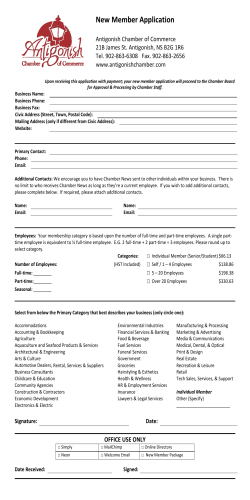
The APEX Target
The APEX Target Silviu Covrig Dusa JLab April 20, 2015 The SLAC Target • Designed and fabricated at SLAC, located at jlab now • Made of 10 W (99.9%) ribbons 2.5 mm wide, 15 µm thick each, 5.5 cm apart (49.5 cm extension along the beam line) • Designed for 3 vertical positions in beam, W target, W cross-wires and C foils • Thermal analysis code written by Clive Fields for 1-D and 2-D • Never used in beam Target Status (I) • Took charge of the target in fall 2014 with two goals: to do a full 3-D thermal analysis of the target and to get it ready for beam • 3-D thermal analysis about 90% done • Beam readiness is ongoing (a student would be needed here to speed things up a bit) • Setback due to mechanical designer support (the designer who supported the APEX target integration has been out on sick leave the past month) Target Status (II) • • • Jan 28 2015 meeting with Robin W., Alan G., E. Folts, Bogdan W., Vladislav R. and I – we’ll generate the 3D-CAD model of the inside the target chamber, Hall A eng responsible for modeling the target chamber on the beam line Mechanical designer, Vladislav Razmyslovich (Slava) started working on APEX target Feb 2015, integrating a 3D-CAD model of the target in its chamber (the Qweak chamber) Slava noticed some interferences between various modeled parts, holes misaligned with bolts etc. – the target model and some parts will need cleaning/remanufacturing APEX Target in the Qweak Chamber The Qweak chamber has 2D motion system 6-axis alignment adjusting mechanism APEX target Beam alignment holes APEX Target Thermal Analysis • Analysis with ANSYS-FLUENT 15 and 16 • W is 99.9% pure, Al frame and holders are made of 6061-T6 alloy • Material properties vs temperature (cp, k) and constant density taken from MPDB (materials properties db, jlab purchased it) • Electron beam at 40 µA, rastered at 2.5x2.5 mm2 uniform heating, 2 W/tungsten ribbon, 20 W total beam heating • Radiation and conduction included, radiation models used P1 and DO (discreet ordinates, no bands), outside radiation temperature assumed 300 K • Cooling/no cooling of the target considered, all contacts assumed ideal/perfect • W emissivity taken from MPDB, ~0.1 (T max ~ 1722 K), but also considered 0.9 (T max ~ 1060 K) • Al absorption taken to be 0 (ΔT max ~ 5 K) or 0.2 (ΔT max ~ 35 K). • The analysis was done in steady-state, but it could be done in transient mode (SLAC model gets T max ~ 1300 K in W at 40 µA, same raster) W ribbons with ε = 0.9 and ε = 0.1 respectively Al-6061 target frame with 0 absorption in Al Al-6061 target frame with 0.2 absorption in Al Summary • Thermal analysis: water cooling the W target for beams up to 40 µA may not be needed (as long as all thermal contacts are perfect) • CAD: clean up the model and see what parts have to be made and/or modified (on hold until a new designer is found) • Test assembly the target, fiducialize and survey the target, check alignment and alignment adjuster, put some temperature sensors on the target frame • Decide which target upper chamber to use • JLab to decide if the target needs a readiness review or it will be folded into the experiment’s readiness review
© Copyright 2025









